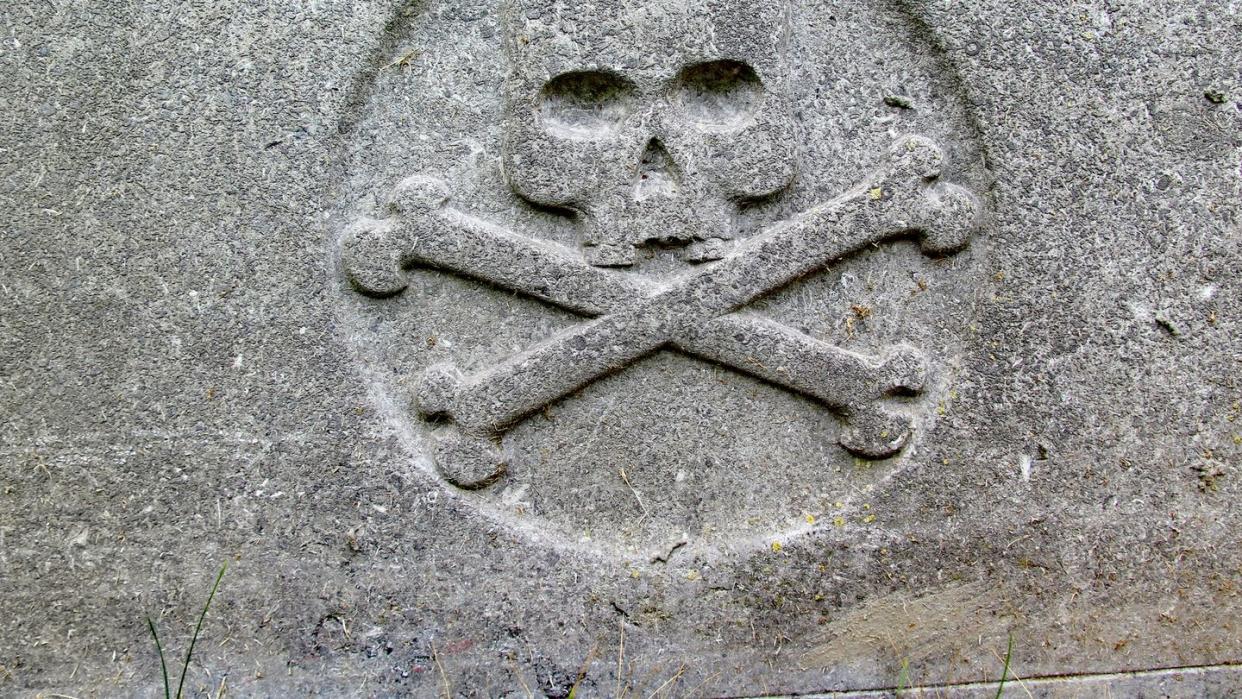Archaeologists Discovered a Haunting Grave That Was Built to Contain Zombies

A late Neolithic or Early Bronze Age grave has revealed ancient strategies to keep the dead from turning into “revenants” and disturbing the living.
The burial included a large stone pinning down the legs of a deceased middle-aged man.
Placing individuals in certain positions to help keep them in the grave was a custom dating back thousands of years.
The grave makers of the Early Bronze Age had their own strategies for keeping the dead... well... dead. In fear of “revenant” people—think zombies—recovering from death to torment those still alive, the people burying the dead would often employ efforts to keep bodies more securely confined to their graves.
One such “zombie grave” was recently found in Oppin, Germany, according to a Facebook post from the State Office for Heritage Management and Archaeology of Saxony-Anhalt. The strategy used for keeping this body in place was a stone over 3 feet long and about 1.6 feet wide pinning down the legs, which belonged to a middle-aged man who would have been burried in the tomb roughly 4,200 years ago. At four inches thick, the stone was no small weight.
“It must be assumed that the stone was placed there for a reason,” a translated statement from the state office read, “possibly to hold the dead in the grave and preventing it from coming back.”
The state office believes that the tomb was laid during the time of the Bell Beaker culture, as it was found near other cultural discoveries. This culture was present near the end of the Neolithic period and start of the Early Bronze Age (roughly 2,800 BC), and while there is little recorded about the Bell Beaker culture, the find could provide deeper insight into the superstitions of the people.
“We know that already in the Stone Age people were afraid of revenants,” Susanne Friederich, an archaeologist with the state office and project manager for the excavations told Newsweek. “Back then, people believed that dead people sometimes tried to free themselves from their graves. Sometimes, the dead were laid on their stomachs. If the dead lies on his stomach, he burrows deeper and deeper instead of reaching the surface.” Some graves even showed that burying the dead on their stomach wasn’t considered enough, and featured the addition of a lance through the torso used to help secure the body in place.
The tomb was found to be empty except for the man buried inside, who is believed to have been aged between 40 and 60 when he died, and was found in a crouched position laid on his side. The oversized stone was placed on his legs (no lance, apparently, was needed).
Fantastical legends have long perpetuated the idea that the undead could rise and inflict distress on the living, and archeologists locating a “zombie” grave dating so far back helps show just how prevalent these beliefs were throughout history—and just how powerful a stone block was thought to be in preventing a revenant.
You Might Also Like

